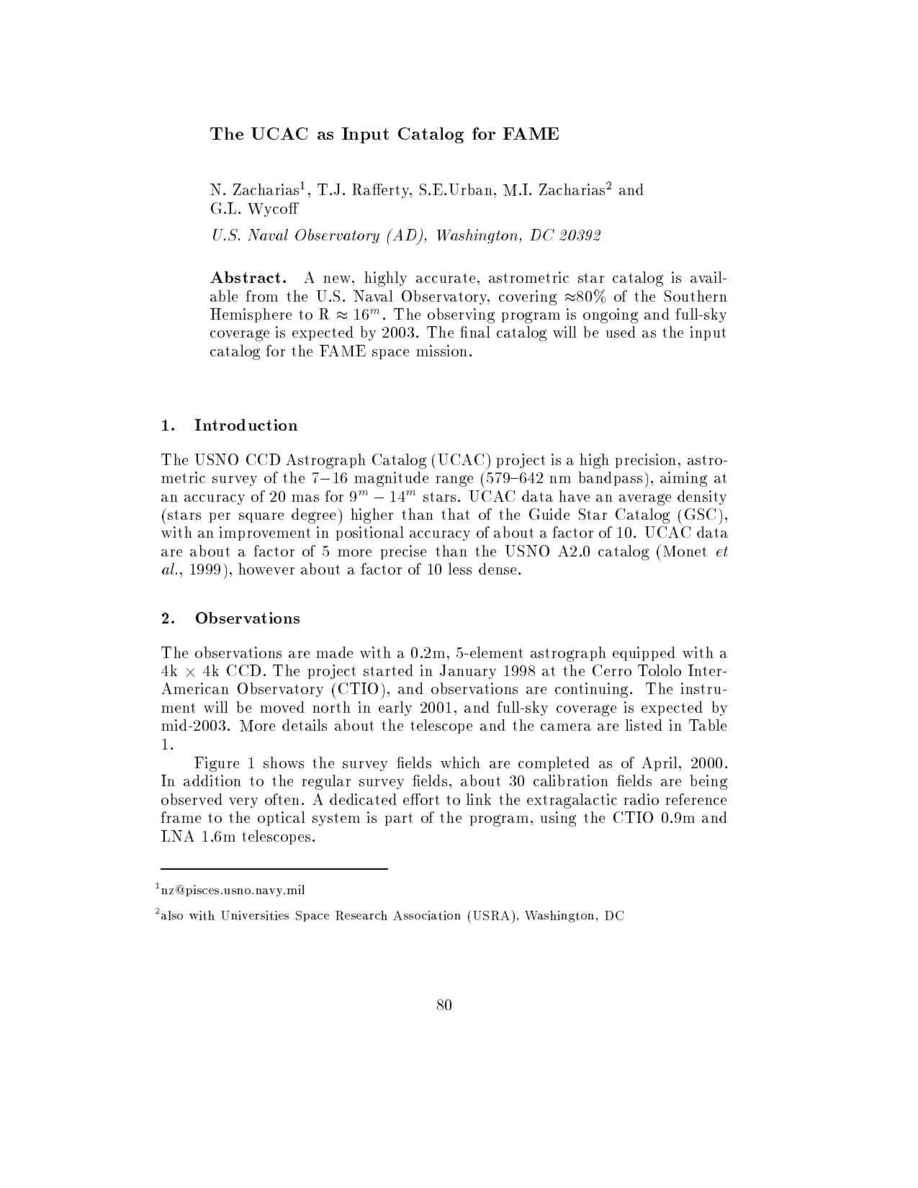
The
UCA
C
as
Input
Catalog
for
F
AME
N. Zacharias
1
, T.J. Ra erty, S.E.Urban, M.I. Zacharias
2
and
G.L. Wyco
U.S. Naval Observatory (AD), Washington, DC 20392
Abstract.
A new, highly accurate, astrometric star catalog is avail-
able from the U.S. Naval Observatory, covering 80% of the Southern
Hemisphere to R 16
m
. The observing program is ongoing and full-sky
coverage is expected by 2003. The nal catalog will be used as the input
catalog for the FAME space mission.
1. Introduction
The USNO CCD Astrograph Catalog (UCAC) project is a high precision, astro-
metric survey of the 7
;
16 magnitude range (579{642 nm bandpass), aiming at
an accuracy of 20 mas for 9
m
;
14
m
stars. UCAC data have an average density
(stars per square degree) higher than that of the Guide Star Catalog (GSC),
with an improvement in positional accuracy of about a factor of 10. UCAC data
are about a factor of 5 more precise than the USNO A2.0 catalog (Monet et
al.
, 1999), however about a factor of 10 less dense.
2. Observations
The observations are made with a 0.2m, 5-element astrograph equipped with a
4k 4k CCD. The project started in January 1998 at the Cerro Tololo Inter-
American Observatory (CTIO), and observations are continuing. The instru-
ment will be moved north in early 2001, and full-sky coverage is expected by
mid-2003. More details about the telescope and the camera are listed in Table
1.
Figure 1 shows the survey elds which are completed as of April, 2000.
In addition to the regular survey elds, about 30 calibration elds are being
observed very often. A dedicated e ort to link the extragalactic radio reference
frame to the optical system is part of the program, using the CTIO 0.9m and
LNA 1.6m telescopes.
1
nz@pisces.usno.navy.mil
2
also with Universities Space Research Association (USRA), Washington, DC
80
